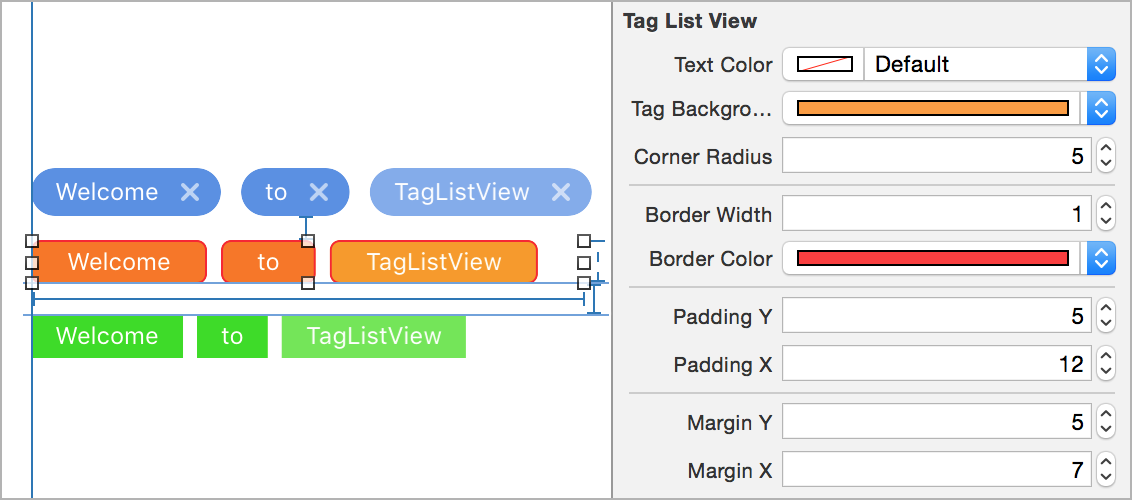TagListView
Simple and highly customizable iOS tag list view, in Swift.
Supports Storyboard, Auto Layout, and @IBDesignable.
Usage
The most convenient way is to use Storyboard. Drag a view to Storyboard and set Class to TagListView (if you use CocoaPods, also set Module to TagListView). Then you can play with the attributes in the right pane, and see the preview in real time thanks to @IBDesignable.
You can add tag to the tag list view, or set custom font and alignment through code:
tagListView.textFont = UIFont.systemFont(ofSize: 24)
tagListView.alignment = .center // possible values are [.leading, .trailing, .left, .center, .right]
tagListView.addTag("TagListView")
tagListView.addTags(["Add", "two", "tags"])
tagListView.insertTag("This should be the second tag", at: 1)
tagListView.setTitle("New Title", at: 6) // to replace the title a tag
tagListView.removeTag("meow") // all tags with title “meow” will be removed
tagListView.removeAllTags()You can implement TagListViewDelegate to receive tag pressed event:
// ...
{
// ...
tagListView.delegate = self
// ...
}
func tagPressed(title: String, tagView: TagView, sender: TagListView) {
print("Tag pressed: \(title), \(sender)")
}You can also customize a particular tag, or set tap handler for it by manipulating the TagView object returned by addTag(_:):
let tagView = tagListView.addTag("blue")
tagView.tagBackgroundColor = UIColor.blueColor()
tagView.onTap = { tagView in
print("Don’t tap me!")
}In this new version you can subclass TagView directly and override any property you would like to be unique for all instances of a tag class. You can also set tagAttributedTitle to use an NSAttributedString for even more customization. See the view controller file in the example project for more info.
Be aware that if you update a property (e.g. tagBackgroundColor) for a TagListView, all the inner TagViews will be updated. (This does not fully apply to tags with attributed titles and does not apply to any overriden property in a custom class.)
Installation
Use CocoaPods:
pod 'TagListView', '~> 1.0'Or Carthage:
github "ElaWorkshop/TagListView" ~> 1.0Or drag TagListView folder into your project.
Older Swift Versions?
Currently, the master branch is using Swift 5.
For Swift 4, use version 1.3.2 or swift-4 branch. For Swift 3, use version 1.2.0 or swift-3 branch. For Swift 2, use version 1.0.1 or swift-2.3 branch. For Swift 1.2, use version 0.2.
Contribution
Pull requests are welcome! If you want to do something big, please open an issue to let me know first.
License
MIT




